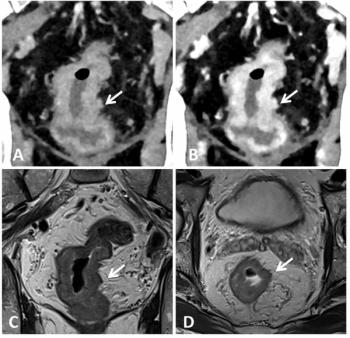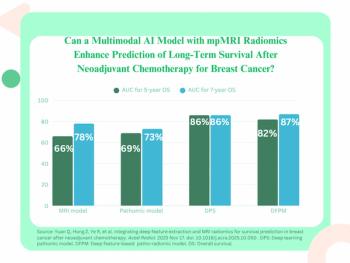
High-tech cabinet helps hospitals manage agents
Sensors glean information from radiofrequency ID chips embedded in labels of contrast bottles
VistaTrak looks like a basic cabinet designed to hold bottles of contrast media. Wall-hung and compact, it seems a practical way to keep these bottles handy for use. But mounted to the side of this cabinet is a touchscreen that hints that VistaTrak may be more than it appears.
Lying in wait beneath its simple exterior are sensors that pick up signals from radiofrequency identification (RFID) chips attached to bottles of contrast. These signals indicate the lot number, expiration date, and other information when each bottle is removed from the cabinet. VistaTrak transmits these data to an inventory management system so managers can track the use of contrast and determine when stocks need to be replenished. It even checks automatically for compliance with dosing protocols.
“VistaTrak allows hospitals to not only track their inventory of contrast agents but to watch for patient safety issues, which are becoming critically important when contrast agents are used in an MR or CT suite,” said Douglas Stefanelli, vice president and general manager of diagnostic imaging for Bayer HealthCare Pharmaceuticals. “It also helps compliance with Joint Commission on Accreditation of Healthcare Organizations standards.”
When linked to an electronic medical record or radiology information system, the high-tech cabinet can flag information that may affect the use of contrast material, such as a patient’s glomerular filtration rate (an indicator of kidney disease) or potential allergic reactions, a cochlear implant, or a pacemaker. The password-protected cabinet further safeguards patients by restricting access to staff who are provided specially designed badges or PIN codes.
Previewed by Bayer at RSNA 2007, VistaTrak is scheduled to begin shipping in mid-2008. Bayer’s MR contrast agent Magnevist will be the first to carry a VistaTrak RFID tag.
The cabinet answers some of the challenges facing providers who are being tasked by federal and state regulators, as well as JCAHO, to reduce medication errors. It addresses them in an automated and cost-effective way, according to Scott Bertetti, Bayer’s associate director of business development for diagnostic imaging, using technnology developed by Mobile Aspects and customized by Bayer and Mobile Aspects specifically for the radiology department.
“We created a small cabinet, because real estate is at a premium in the radiology area,” Bertetti said. “We also changed the interface to fit workflow in the radiology department and to address Joint Commission concerns about the use of contrast.”
Newsletter
Stay at the forefront of radiology with the Diagnostic Imaging newsletter, delivering the latest news, clinical insights, and imaging advancements for today’s radiologists.



























